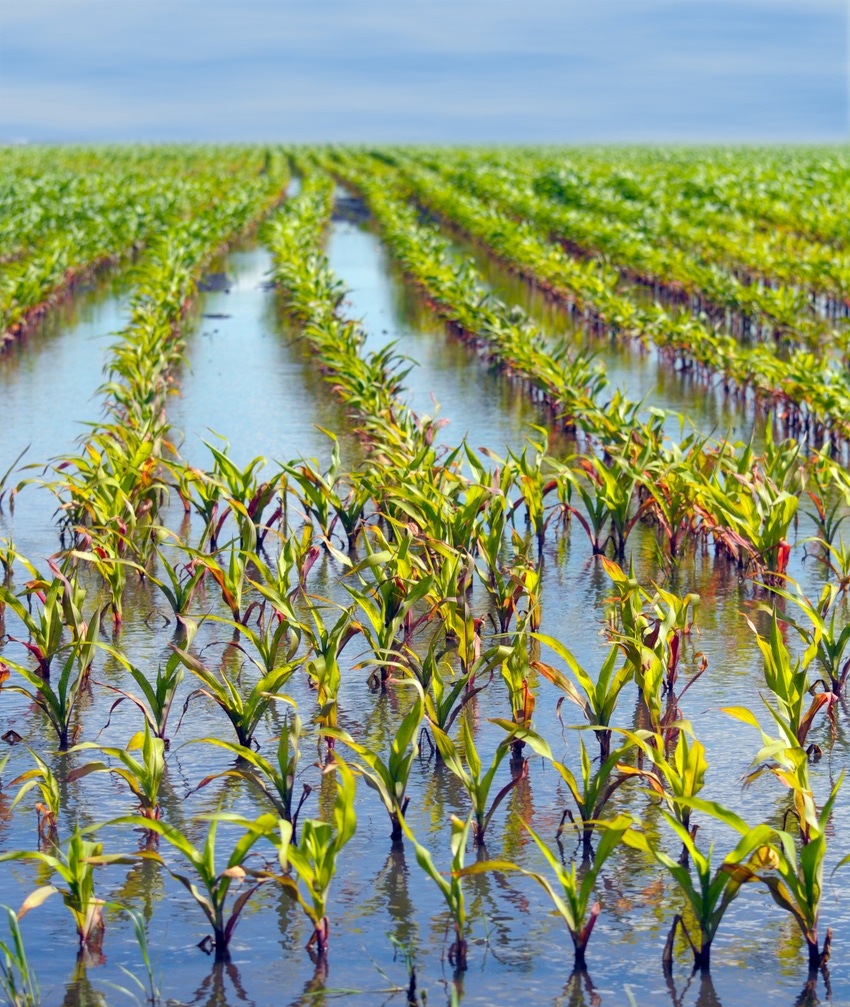It is always a good idea to use a quality control program for incoming feedstuffs. Test all fermented feedstuffs and forages for molds and mycotoxins if you suspect a problem.
October 8, 2015

Sponsored Content
As harvest continues this fall, farmers should pay close attention to their crop quality. Preliminary testing of the 2015 North America wheat crop, conducted by the ALLTECH 37+® mycotoxin analysis this summer, showed an average 3.2 mycotoxins per sample, with deoxynivalenol (DON) the most predominant toxin. This trend appears consistent among corn and soy samples as well.
Dr. Max Hawkins, a nutritionist with Alltech’s Mycotoxin Management team, said the most common mycotoxin issue is DON, produced by the Fusarium graminareum mold. At high-risk levels, DON can have negative impacts on animal health and productivity, such as weight gain, gut irritation and lower immune response. This is the same mold that produces Fusarium head blight (FHB). However, in some cases DON can still be present even if FHB is not spotted. Critical factors for Fusarium mold growth include heavy rainfall, moderate temperatures, plant immaturity and crop stress or damage from insects, hail and wind.
The additive effect of multiple mycotoxins
Health and production problems associated with the ingestion of mycotoxins vary widely due to several factors. In most cases of mycotoxicosis, there is generally more than one type of mycotoxin involved. Multiple toxins create an “additive effect,” which may involve one or more clinical symptoms or observations. The severity of a mycotoxin challenge is based upon the following:
Which toxin or toxins are involved
The level of mycotoxin contamination (in ppm or ppb)
Length of exposure to the contamination
Many times it is not an acute case that can be readily identified, but a chronic situation associated with the ingestion of low levels of mycotoxins over an extended period of time. This results in a wide array of subclinical symptoms that slowly reduce performance, eat away at the producer’s bottom line and compromise herd health.
After the rain: Troubleshooting the problem
Summer rainfall levels through Missouri, Iowa, Illinois, Ohio, Michigan and Indiana presented a consistent pattern with areas of high mycotoxin contamination in wheat testing from 2,000 to 12,000 parts per billion (ppb).
Hawkins advises farmers to scout fields for any stalk or leaf mold issues, as well as for any damage to plants from insects or weather conditions, such as wind or hail. Also look for any irregularity in the field. Excess rain can create ponds that can drown out or stunt crop growth and generate differences in soil types across a field.
Producers should take the necessary management steps upon harvest to help troubleshoot existing issues with contaminated feedstuffs:
Use of a silage inoculant
Proper packing and covering of grains
Grain drying – dry to 14 percent moisture
Use of a proper mycotoxin management program
“Crop differences displayed across a field go into the same storage bin or bunker and are mixed, contaminating the entire crop,” Hawkins said. “Once the crop is in the bin, we can get pockets with higher moisture levels, attributing to increased mold growth and spoilage, which in turn can produce mycotoxins and lower the nutrient value of the feed.”
Related
Is your corn silage problem-free? Monitor it to make sure
5 weaning resources for cow-calf producers
It is always a good idea to use a quality control program for incoming feedstuffs. Test all fermented feedstuffs and forages for molds and mycotoxins if you suspect a problem. Many producers have their feedstuffs and forages tested at laboratories, such as the Alltech 37+® laboratory, to determine mycotoxin presence before feeding any silages and hay. Try to discard any feed ingredients that are moldy and musty smelling.
The use of a sequestering agent in the ration at all times will help prevent and/or offset the negative effects of molds and mycotoxins. Take into consideration the additive and synergistic effects of multiple mycotoxins in feedstuffs.
As the season continues, if you think you have a situation where molds and mycotoxins are hindering performance, be sure to contact your nutritionist and veterinarian to formulate a management plan so you can get the most out of your feedstuffs this year.
You might also like:
15 photos showcase hardworking American ranchers
Genetic accident produces White Angus
What's the best time to castrate calves? Vets agree the earlier the better
You May Also Like



